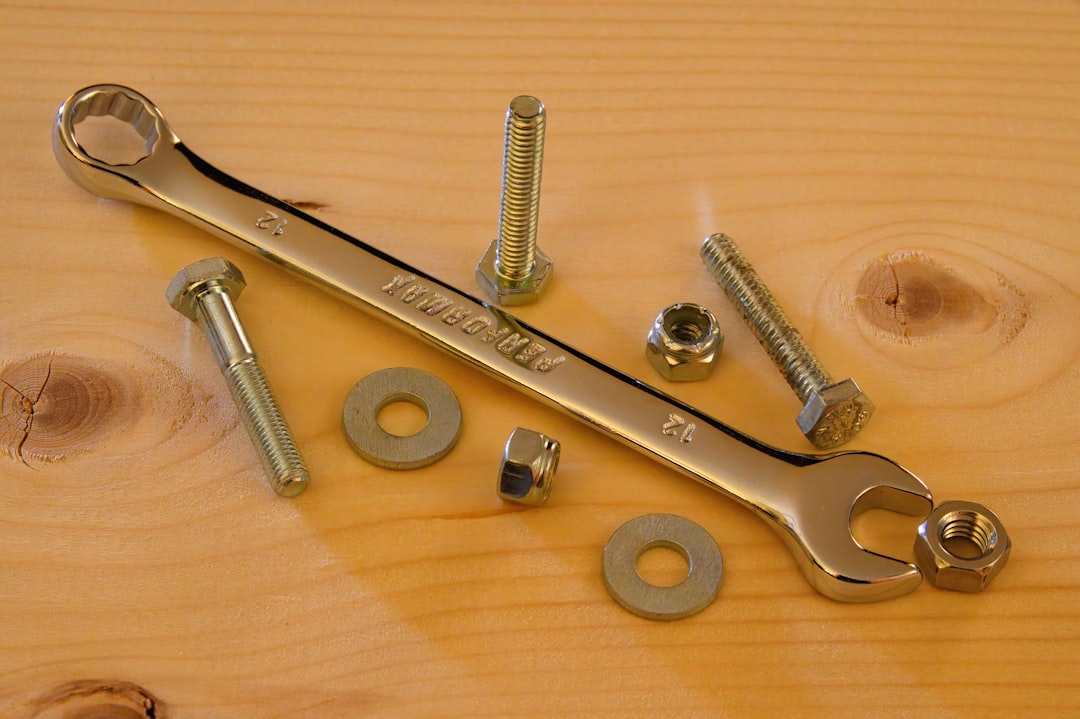

Engage prospects with a scan and streamline customer engagement with FREE QR code marketing tools by Sona – no strings attached!
Create a Free QR CodeFree consultation

No commitment

Engage prospects with a scan and streamline customer engagement with FREE QR code marketing tools by Sona – no strings attached!
Create a Free QR CodeFree consultation

No commitment
Musical instrument repair shops occupy a unique space at the crossroads of craftsmanship, cultural preservation, and their local economies. For decades, these businesses have sustained vibrant music scenes and extended the lives of cherished instruments, from violins to electric guitars. As digital channels become vital for growth and customer engagement evolves, many shops face the challenge of bridging their physical expertise with effective online interaction.
QR codes have evolved from a technological novelty into practical tools that support marketing and customer operations. For musical instrument repair shops, QR codes provide opportunities to increase lead generation, simplify appointment booking, and collect feedback without requiring customers to install new apps or navigate complex systems. These QR-driven interactions help shops capture engagement signals that were previously invisible and to measure what used to be guesswork in offline marketing. See QR codes in marketing for deeper tactics.
This guide offers actionable strategies for using QR codes to boost conversions in musical instrument repair services. When implemented correctly, QR codes can transform everyday touchpoints, like flyers or receipts, into significant connections. This enables repair shops to enhance customer experience, monitor engagement, and drive revenue growth. Leveraging these digital tools leads to smarter audience segmentation, targeted marketing, and stronger business results, especially when combined with a platform such as Sona QR for creation and tracking, or Sona.com for attribution.

Repair shops often miss valuable prospects because analog processes create friction and fail to capture essential customer data. A curious browser may grab a flyer or snap a photo of your window hours, then never return because there is no immediate next step. Service interest frequently goes unconverted if customer visits or phone calls are not linked to your repair CRM and follow-up. QR codes bridge those gaps by turning every physical touchpoint into a digital action.
Start by mapping outdated workflows such as paper appointment forms, static brochures, or generic receipts and replace them with QR-enabled options that accelerate action and capture intent:
When you reduce engagement barriers and capture previously anonymous visitor information, you create data-driven pathways from curiosity to loyalty. Shops that adopt QR codes often see faster initial response times, a measurable lift in appointment bookings from print media, and higher review volumes that enhance local search visibility.
A practical starting point is to pick one high-friction touchpoint and digitize it. For instance, replace paper intake forms with a QR that leads to a mobile-friendly form. Add a prominent call to action such as Scan to start your repair in 60 seconds. Test placement and lighting to ensure scannability and monitor conversion rates with Sona QR analytics to refine your approach.

Fragmented customer journeys frustrate both shop owners and customers. A guitarist may see your booth at a school fundraiser or notice your poster at the community arts center, then forget to follow up because the next step was unclear. Without an easy way to act, high-intent leads slip away. QR codes turn passive interest into immediate action by letting people scan to book a repair, request a quote, or watch a care video on the spot.
QR data also delivers new visibility into offline marketing. Instead of guessing which poster or postcard pulled better, you can see which placements and offers attract the most valuable customers. Dynamic QR codes let you adjust promotions and destinations in real time based on scan behavior. If a humidifier offer is driving scans in winter, you can shift more placements to that message without reprinting codes.

Instrument repair services benefit most from QR code formats that reduce friction and improve follow-up. Each format can align with different customer needs and lifecycle stages. Start with formats that connect to your primary outcomes such as booking, quoting, and feedback, then expand into service documentation and loyalty.
Choose dynamic QR codes for any campaign that may require updates, testing, or detailed analytics. Static codes work well for permanent destinations such as your vCard or a general About page. With Sona QR you can manage all formats, tag codes by location or use case, and switch destinations without reprinting.

Growth in this sector depends on visibility and follow-up. Every instrument case, counter mat, and recital program is a chance to capture intent. Look for places where customers already engage offline but lack a clear digital onramp. Turning those touchpoints into trackable actions compounds small wins across your funnel.
Deploy QR codes where your audience spends time and where intent peaks. Design each placement with a benefit-driven call to action and a mobile-optimized landing page that matches the promise in the physical environment.
As you place codes, keep the environment in mind. Laminated counter signs should resist glare. Posters need large codes and short supporting copy. Instrument tags should scan at arm’s length. The easier the scan, the higher the conversion rate.
These three use cases align with the most common customer interactions in repair shops: checkout, discovery in public spaces, and live events. Shops that implement them consistently report measurable lifts in engagement and smoother handoffs from offline interest to online action.
Many shops struggle to personalize outreach because much of their traffic remains anonymous. A scan, however, is a strong signal of intent. By tagging codes for different purposes or funnel stages, you can connect engagement to segmented audiences and respond with relevant messages.
Begin by defining the customer journeys that matter most: first-time inquiry, post-service care, and upgrade or accessory upsell. Then assign unique QR codes to those journeys so every scan maps to a segment in your CRM or ad platforms. Sona QR makes this easy with tags and auto-sync options for tools like HubSpot, Salesforce, or Meta.
Over time, these segments tell you which channels introduce serious prospects and which messages win follow-up. That insight informs budget allocation and the creative that earns the next scan.
QR codes are more than convenient links. They are connectors that join the physical world of instruments, benches, and stages with your digital booking and content. When you treat QR codes as an integral part of your marketing stack, you gain speed, data, and a better customer experience across channels.
Repair shops typically rely on a mix of print, community events, storefront presence, and word-of-mouth. QR codes make each of those channels measurable and interactive. With Sona QR, you can manage codes centrally, test messages, and sync scan events to your CRM for automated journeys.
When all scans flow into a central platform, you unlock multi-touch journey insight. Sona.com connects scans to web visits, email clicks, and CRM stages so you can see how offline interest becomes booked work and repeat business.
QR campaigns perform best when they follow a clear plan from goal to optimization. Use the steps below as a blueprint for your next initiative and adapt the details to your shop’s environment and audience mix.
Clarify your objective before creating any code. Are you trying to increase bookings from window shoppers, collect reviews at checkout, or capture leads during a school instrument night? A focused goal makes every downstream decision easier.
Choose static or dynamic based on your need for flexibility and tracking. Most marketing use cases benefit from dynamic codes that allow updates and analytics without reprinting.
Good design and scannability are non-negotiable. The best CTA fails if the code is too small or poorly lit.
Roll out your codes where they will have the greatest effect, keeping physical context and audience behavior in mind.
Measure what matters and iterate. QR campaigns improve quickly when you use analytics to refine creative, placement, and follow-up.
A short feedback loop keeps your campaigns relevant to seasonality and community needs. Treat each code as a mini funnel with a clear hypothesis and target outcome, then evolve it based on performance data.
Marketing efforts can seem effective but result in few tangible appointments if tracking is insufficient. A poster that looks great and a booth that draws a crowd are not enough without a way to measure outcomes. Modern QR analytics tools let repair shops attribute offline interactions to real conversions and double down on what works.
With Sona QR and Sona.com, you can go far beyond raw scan counts. Capture detailed context for every scan such as time, device, location, and campaign source. Then sync that data with your CRM to attribute appointments, invoices, and reviews back to the QR that prompted action.
The result is a complete view of your offline-to-online funnel. You can quantify the value of a window decal, a school partnership, or a postcard drop and allocate spend toward the assets that generate appointments and repeat visits.
QR campaigns succeed when they are consistent, easy to scan, and connected to meaningful actions. Start with a few high-impact placements, then broaden your coverage as you see results. Automation multiplies the value of each scan and helps you operate efficiently during busy seasons.
Creative deployments can keep engagement high. For example, put a QR on rental agreements that opens a quick maintenance video, or add a QR to a loyalty tag inside the case that shows restring eligibility and a small discount for booking online.

Many repair shops have translated everyday touchpoints into measurable conversions by embracing QR codes. What once felt like a novelty has become a reliable way to connect print and physical spaces to digital actions that your team can track and improve over time.
A professional violinist shares: "Having quick mobile access to my repair history and being able to book follow-ups in seconds keeps my instrument, and performances, at their best." Quotes like this also make great testimonial content for QR-driven landing pages.
Creativity counts. Consider QR scavenger hunts during community events where each scan reveals a care tip and a small prize, or partner with school music teachers by placing a QR on practice logs that links to a seasonal discount for parents.
QR codes are simple to deploy but easy to misapply without attention to context and follow-up. Small mistakes like placing codes too close to the floor or using glossy signage can tank scan rates. Conversely, thoughtful design and clear incentives will make your codes feel like a natural part of the customer experience.
QR codes empower musical instrument repair shops to turn every instrument, counter, or event into a trackable marketing channel. By addressing the issue of lost opportunities from anonymous or untracked prospects, these tools enable shops to capture more leads, facilitate booking, and collect actionable customer data at every touchpoint. The added visibility moves customers from awareness to advocacy and opens new upsell opportunities based on real engagement.
With a thoughtful QR strategy powered by Sona QR for creation and analytics and Sona.com for attribution, you can connect scans to revenue and make offline marketing as measurable as your digital campaigns. Start with one or two high-impact placements, monitor results, and expand steadily. Start creating QR codes for free.
QR codes have transformed musical instrument repair shops from simple service providers into dynamic, customer-centric growth hubs. Whether it’s attracting new clients, enhancing the repair experience with instant access to service history or tutorials, or streamlining appointment scheduling, QR codes replace outdated processes with seamless, mobile-friendly interactions that capture actionable data to boost conversions. Imagine knowing exactly which repair promotions or in-store displays drive bookings—and being able to optimize them instantly.
With Sona QR, you can create dynamic, trackable QR codes in seconds, update campaigns without costly reprints, and link every scan directly to revenue and customer engagement metrics. No missed opportunities, just smarter marketing that turns every interaction—whether in-shop or online—into a loyal customer. Start for free with Sona QR today and transform each scan into your next repair appointment or upsell.
Look for shops with strong local visibility, positive online reviews, and engagement at community events or music programs to identify reputable musical instrument repair shops nearby.
Musical instrument repair shops offer services including instrument tune-ups, repairs, maintenance guidance, warranty registration, loaner policies, and accessory recommendations for instruments like violins and electric guitars.
Repair costs vary depending on the instrument and service needed, but shops often provide instant quotes through online forms accessible via QR codes for transparent pricing.
QR codes simplify appointment booking, increase lead generation, enable easy feedback collection, track offline marketing effectiveness, and create seamless offline-to-online customer journeys without requiring app downloads.
By integrating QR codes on print materials, event signage, receipts, and instrument tags to drive bookings, collect reviews, and capture leads, shops can enhance engagement and boost local search visibility.
Use Sona QR's trackable codes to improve customer acquisition and engagement today.
Create Your FREE Trackable QR Code in SecondsJoin results-focused teams combining Sona Platform automation with advanced Google Ads strategies to scale lead generation

Connect your existing CRM

Free Account Enrichment

No setup fees
No commitment required

Free consultation

Get a custom Google Ads roadmap for your business






Launch campaigns that generate qualified leads in 30 days or less.
